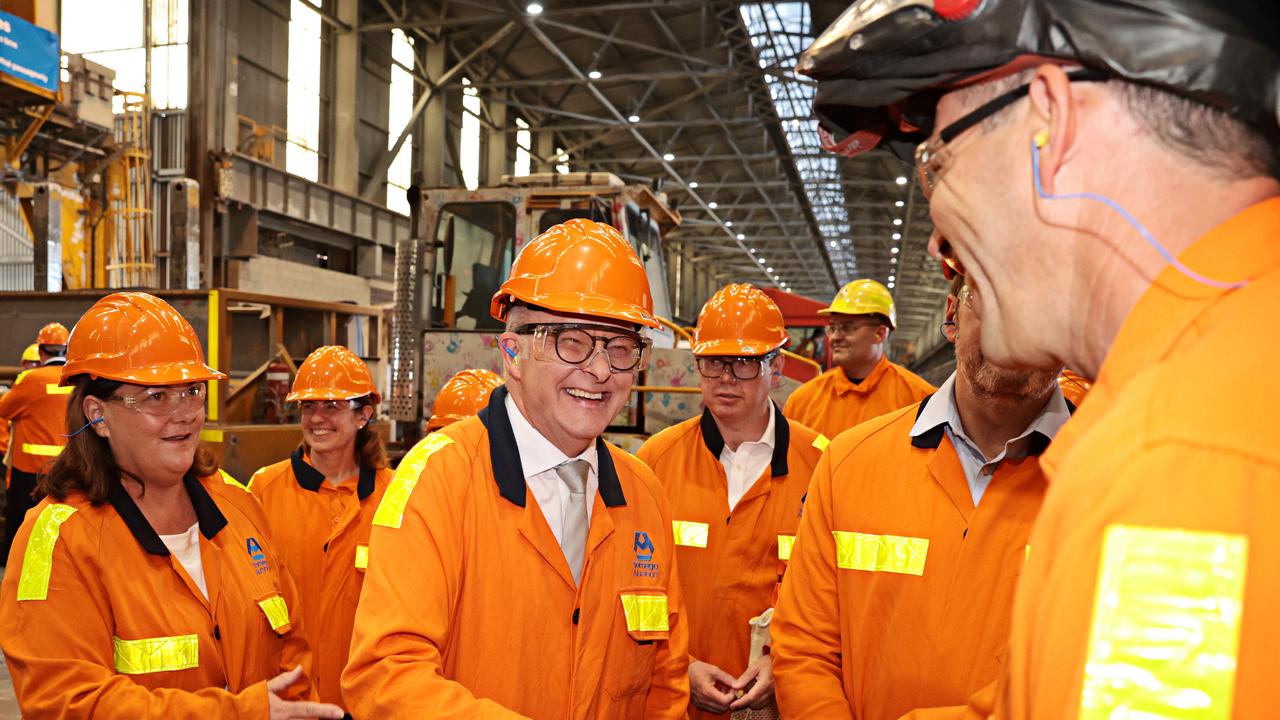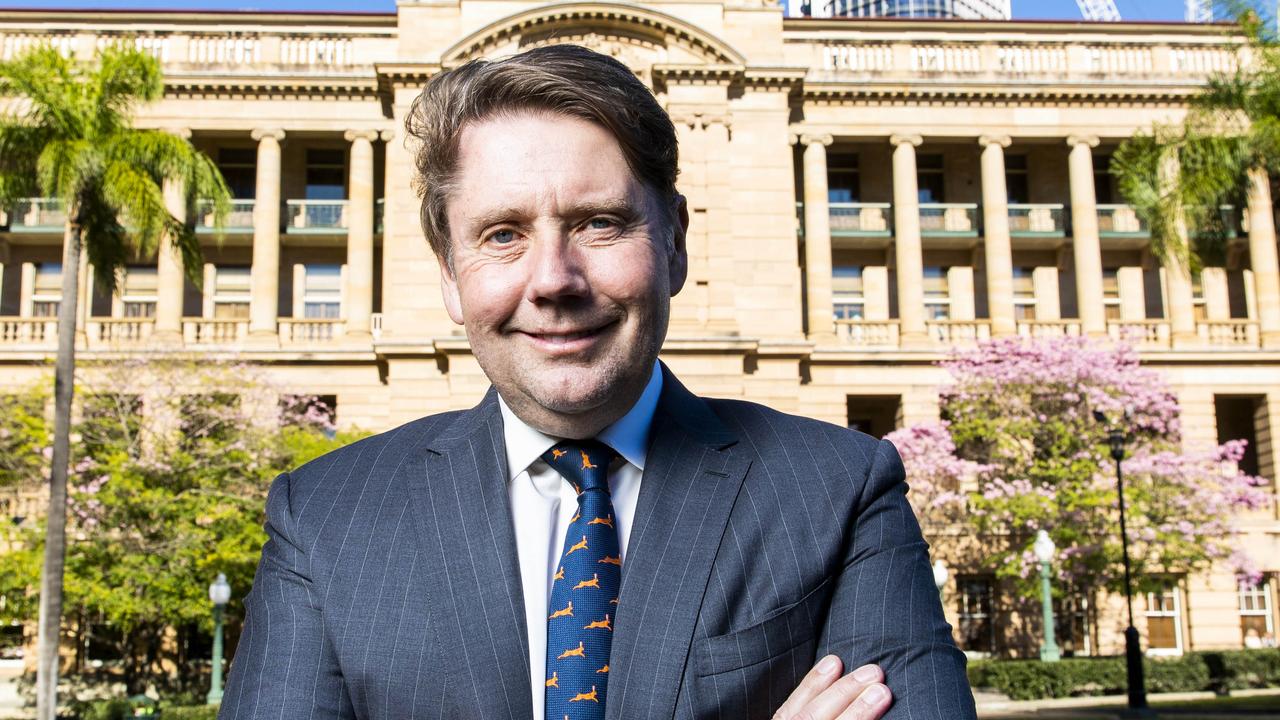Executive pay had a big jump last year, but shareholders did not share the gains
Listed company chief executives enjoyed pay increases more than four times broader wage rises, while returns to shareholders went the other way.

Business
Don't miss out on the headlines from Business. Followed categories will be added to My News.
Listed company chief executives enjoyed pay increases more than four times broader wage rises last financial year, with oil and gas company bosses’ pay surging by more than 25 per cent.
The latest Guerdon Associates annual review of pay increases for chief executives and managing directors of ASX300 companies shows their median total remuneration increased by 13.3 per cent last financial year, on top of 15.8 per cent in 2020-21.
This followed two flat years, with pay up just 1 per cent in 2018-19 and falling 2.3 per cent the following year as the pandemic started to bite.
In terms of fixed remuneration, CEO pay also outpaced the increase of 3.1 per cent in the Australian Bureau of Statistics’ Wage Price Index over the year to September 2022, adding 4.5 per cent over the last financial year – the fastest increase in a decade.
Guerdon sampled 176 of the ASX300 companies, and found that the 13.3 per cent increase was down to a boost in both base pay and variable remuneration.
“While lower than increases to variable remuneration, the 4.5 per cent median increase in total fixed remuneration (TFR) is the largest since 2012 levels and has a multiplicative impact on variable components,’’ Guerdon says.
“Sixty-nine per cent of the sample experienced an increase in TFR. This is a significant change from the prior year where only half of sampled CEOs experienced an increase in TFR.
“Only 7 per cent of CEOs saw a decrease in TFR, compared to 19 per cent in the previous year.
“Pay movements did not reflect total shareholder return (TSR) outcomes this year, with a median TSR outcome of minus 11.1 per cent and (an average) increase in total remuneration of 12.5 per cent.’’
The nine energy companies included in the sample delivered the largest increases in total remuneration – including short and long term incentives, with CEO pay up 27.5 per cent, while total shareholder returns fell 3.8 per cent.
Real estate firms delivered a median 17.8 per cent increase in total remuneration against a 24.2 per cent fall in TSR, while materials companies bosses added 16 per cent in pay against a 6 per cent TSR.
Health care chief executives were the only ones to take a hair cut, with median total remuneration down 1.8 per cent against a 21.2 per cent fall in TSR.
Guerdon said its review “indicates that incentive targets were ‘right-sized’ after the initial pandemic year wiped out many executive incentives’’.
Looking at the current financial year, Guerdon said it expects wage inflation in the broader economy to come in at 3.8 per cent with low unemployment and cost of living pressures putting upwards pressure on wages while “most governments are supporting solid increases in aged, health and disability care sectors’’.
Guerdon is expecting a moderation in the rate of increase in executive pay this year.
“Overall, CEO and other executive fixed pay increases are likely to be lower than prior to be under 4 per cent,’’ Guerdon says.
“They will revert back to lagging general employee increases, and reflect a tightening economy.
“However, there will be significant variation by industry, job family and company, depending on changes in investor sentiment, business headwinds or tailwinds, and labour supply.
“2022 remained a good year for realised incentive payments reflecting the post-Covid bounce and sustained demand.
“2023 will be more mixed, and less than in 2022 as some industries will experience a slowdown as the economy tightens.’’
Guerdon said ESG measures would continue to be front of mind for boards setting incentives and said that outside of the financial services sector, “many other companies are introducing non-financial measures in long term incentives’’.
“This is necessary given that the myopic emphases by many investors do not appropriately price the costs of carbon and other costs requiring capex.
“In response, external stakeholders keep lifting the bar, expecting harder and more measurable targets, especially on climate related measures.
“Proxy advisers and investors will demand more and stretching quantitative ESG targets.’’
And for companies in the ASX100, cash flow will be an emphasis, Guerdon says.
“Given the rising cost of money, most investors want to see more of it, now.
“They do not want to see it deferred, and discounted to nothing. For listed companies, especially those in the ASX100, incentive frameworks will need to emphasise cash flow, and support capital strategies that see high levels of distributions to shareholders.
“In summary, executive pay frameworks and targets will need to consider free cash flow, lower growth and investment, margin and supply pressures, higher capital costs, changes in industry-specific investor sentiment, continuing talent shortages, and more refined and higher investor ESG expectations.’’
More Coverage
Originally published as Executive pay had a big jump last year, but shareholders did not share the gains





